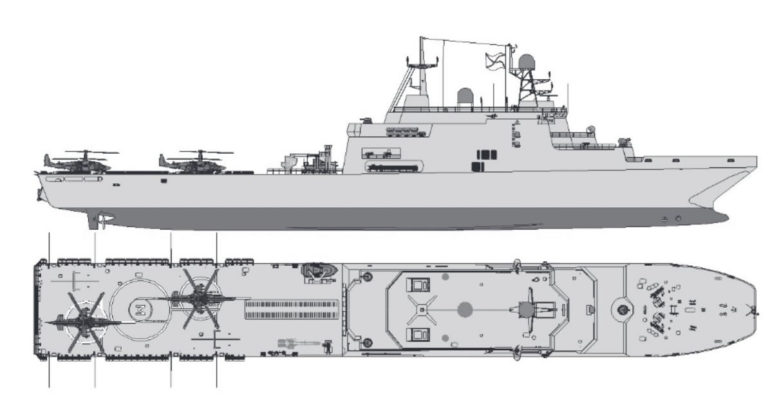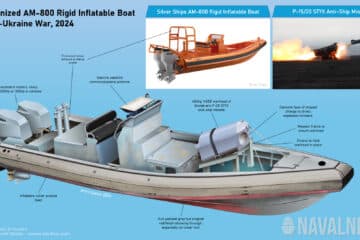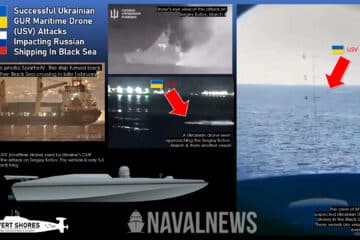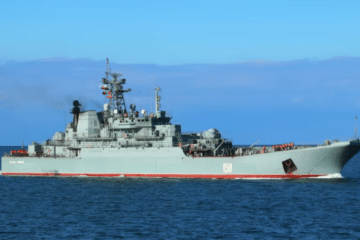The image and text about the new project was published in the official internal newspaper of the shipyard (original link in Russian language):
Internet portal FlotProm, dedicated to Navy and Shipbuilding news, asked us to answer a number of questions related to the construction of large amphibious assault ships built by “Yantar” in April. We think these answers will be interesting to our readers. We thank the chief engineer of the plant, Igor Leonov, and the project director, Roman Fedyunin, for their help in preparing them.
How much faster will the plant build a new Project 11711 landing ship, including hull works and equipment fitting out, taking into account the serial production of the project? If the ships are in serial production, it would mean they fully correspond to the previously developed design documentation for the construction of orders for plant managers. No301, No 302, the plant would significantly reduce the time of their construction and testing (according to the reference schedule – up to 3-4 months from the lead ship). However, it is possible to call these ships serial only conditionally, since their dimensions are seriously changing and, apparently, the energy is changing. We will see all the changes only after receiving a technical project from the developer. Therefore, it is too early to talk about shortening the construction period. Today, they are defined by contract-tom – it is in this very, very tough, time frame that we plan our work
What new challenges will the shipyard face. The new landing ships will be built according to a modified project: are they longer, wider and have a large displacement? We anticipate no new difficulties, or “challenges” in building this new project. The new LSTs will differ from their predecessors in the basic parameters: the hull will be modernized, and a minor adjustment will be required in the matter of preparing the production. But we are ready for this 100%. We understand the work, there are no revolutionary solutions on these ships. No fundamentally new technologies will be applied, and in this regard, the shipyard will not experience difficulties. Much, as our experience shows, will depend on the quality of the project documentation: the higher it is, the less alterations will be made in the construction process.
[…]
Will the configuration of the installation work change? How will the experience gained during the work on Ivan Gren and Peter Morgunov be used in this process? The configuration of the location of the main power plant is determined by the design documentation and will be performed according to the requirements approved by the Navy according to the results of the BDK technical design materials in the modernized building. Finally, it will be possible to talk about this later – after we receive the technical project. Today, indeed, the question of another power plant is being considered, as the ship’s dimensions have increased. Most likely, more powerful installations will be needed to maintain speed and, especially, to ensure landing operations. Preliminary work shows that this is possible. Installations may be of a different type, but they will be serial installations of domestic production.

The vessels of the Ivan Gren-class have a displacement of about 6,000 tons and are able to carry up to 13 main battle tanks or 36 armored personnel carriers and 300 marines. The first ship of the class was laid down in December 2004, launched in May 2012 and commissioned with the Russian Navy on 20 June 2018. Sistership Petr Morgunov was launched in May 2018 and should be commissioned this year.
On 23 April 2019, two modified Project 11711 landing ships, Vladimir Andreev and Vasily Trushin, were laid down at the Yantar Shipyard. The two new ships differ with modified superstructure, increased displacement to 7000-8000 tons and, according to the above illustration, longer hulls.
The new design would be able to accommodate up to four helicopters (Ka-52K and Ka-29 type) in the hangar. The flight deck should allow the simultaneous operation of two helicopters of this type, or a single Mi-8/Mi17 (which are larger).






